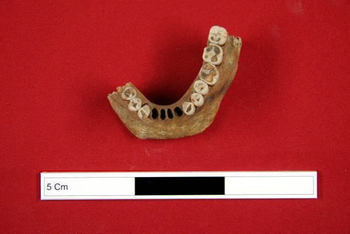An Osteological Analysis and Social Investigation of the Cremation Rite at the Cemeteries of Elsham and Cleatham, North Lincolnshire: PhD Thesis, University of Sheffield (2011)
Kirsty Squires, 2015
Data copyright © Dr Kirsty Squires unless otherwise stated
Primary contact
Dr
Kirsty
Squires
Resource identifiers
- ADS Collection: 1902
- DOI:https://doi.org/10.5284/1029431
- How to cite using this DOI
Introduction

In 2008, Kirsty Squires obtained PhD funding from the Arts and Humanities Research Council to conduct an in-depth assessment of the Elsham and Cleatham cremated bone assemblages at the University of Sheffield. This programme of research was designed to address four primary aims. The first aim of this project involved constructing demographic profiles of the Elsham and Cleatham burial populations. This was achieved through a full osteological analysis of the cremated and unburned bone assemblages. The secondary aim of the project was to gain an understanding of the identity of the individuals buried at these sites through an examination of the artefactual evidence and cemetery organisation. Here, information about the grave- and pyre-goods, cinerary urns, animal remains, and spatial distribution of burials at these sites were analysed alongside the demographic attributes of the burial populations. The third aim of this research was to explore the efficiency of the cremation process through a macroscopic examination of the burned bone alongside more technical forms of analysis, including histomorphometry and Fourier Transform Infrared (FT-IR) spectroscopy. The final and overarching aim of this doctoral project was to produce and disseminate a dataset detailing the cremated and unburned bone from the Elsham and Cleatham cemeteries.
The results of Kirsty Squires' doctoral research were published in 2012 and 2013 in the Archaeological Journal (see Related Information on the Metadata page). This digital resource contains the data that were collected and discussed in these articles. The following dataset includes a full catalogue of the cremated bone from both cemeteries, the skeletal remains from the Elsham inhumations, and the unburned bone fragments recovered from the Cleatham cremation burials. This resource also contains a database of the burial co-ordinates from these sites.
The cremated and unburned bone, cinerary urns, and grave- and pyre-goods from both cemeteries are currently housed in North Lincolnshire Museum.




